This post has been a long time coming.
In the fall, I ducked into one of the special exhibition galleries during MFA Late Nite and was mesmerized by displays of knotted rope.
I vowed to talk more about them, and then was off to the next shiny thing.
Never fear! For March's Art in Focus, I'm revisiting these surprisingly intricate artifacts.
(The gallery was incredibly dark, so photos are slightly grainy)
Ancient civilizations are so named for their ability to progress — economically, socially, technologically, and verbally.
This progression is thanks to systematizing processes — like capturing time and history.
Enter the Andes peoples, and contemporary artist Cecila Vicuña who gave these items another life in today's world.
Quipu (pronounced: khi-pu) are recording instruments, sharing numeric details about different facets of society.
Unfortunately, like too many non-Western cultures, the quipu were almost lost when the conquistadors entered South America.
We are incredibly lucky that Vicuña was inspired by her heritage to study these confusing artifacts to bring them back to life and educate us on the orderly Andean peoples.
I am also proud to live in a city like Boston where institutions not only collaborate frequently (while the MFA hosted the exhibit, the ancient quipu displayed were from Harvard's Peabody Museum of Archaeology and Ethnology), but are interested in showcasing marginalized art and artists — and in a way that combines the new and old to offer a revitalized viewer experience.
When you first entered the dark gallery space, you were met by swaths of white, fuzzy wool fabric draped from the ceiling and knotted in varying orders and lit by a patterned color projection.
Quipu are "easy" to make — they only require pieces of string or rope (or wool) that can be knotted.
Of course, there's nothing "easy" about understanding quipu since this practice as lost until Vicuna's research, but I imagine that this would be a practice just as common as cataloguing books in a library today, or any other methodical approach to counting.
What ancient method have you recently seen come back into modern understanding?
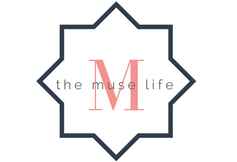
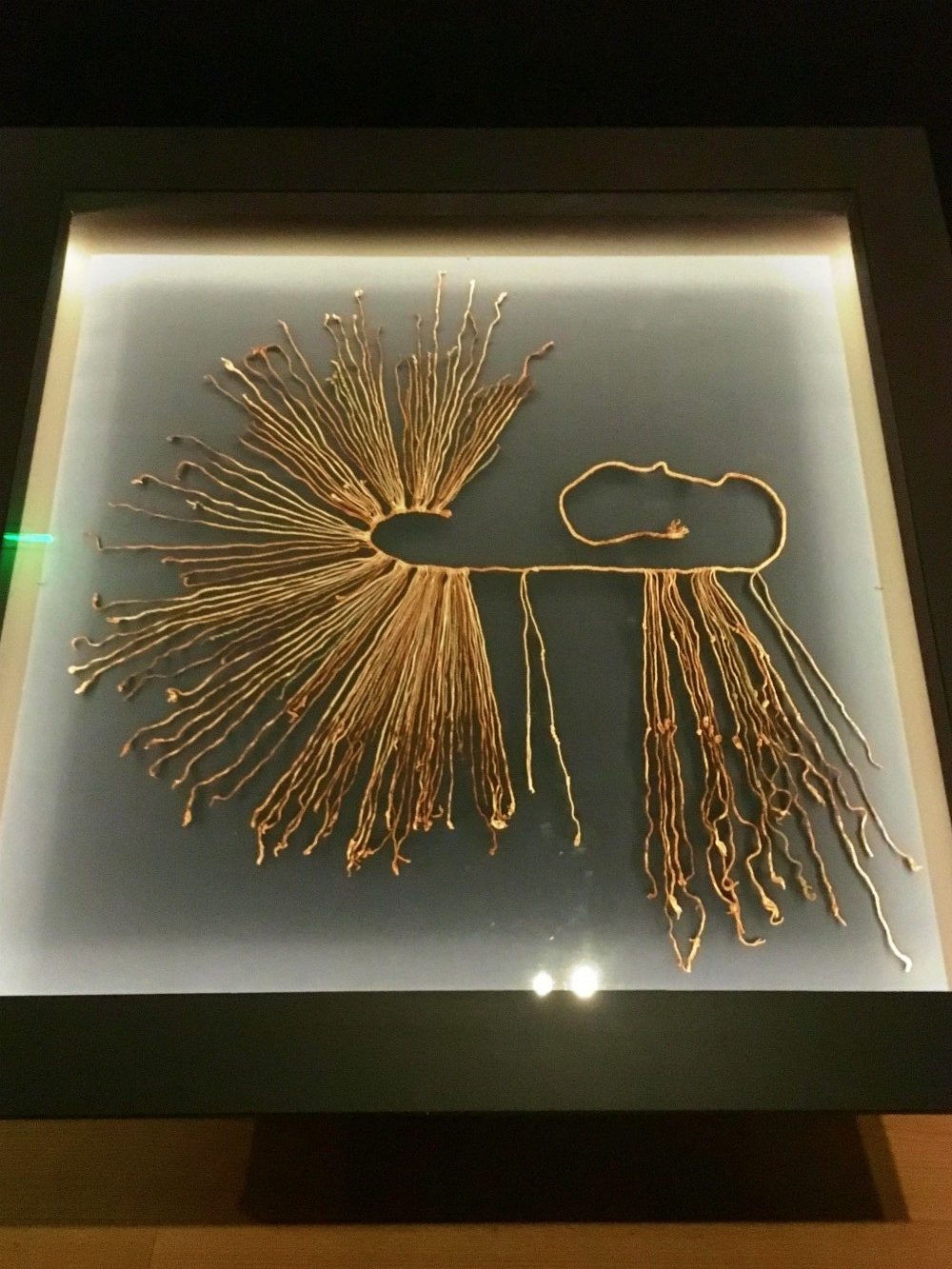
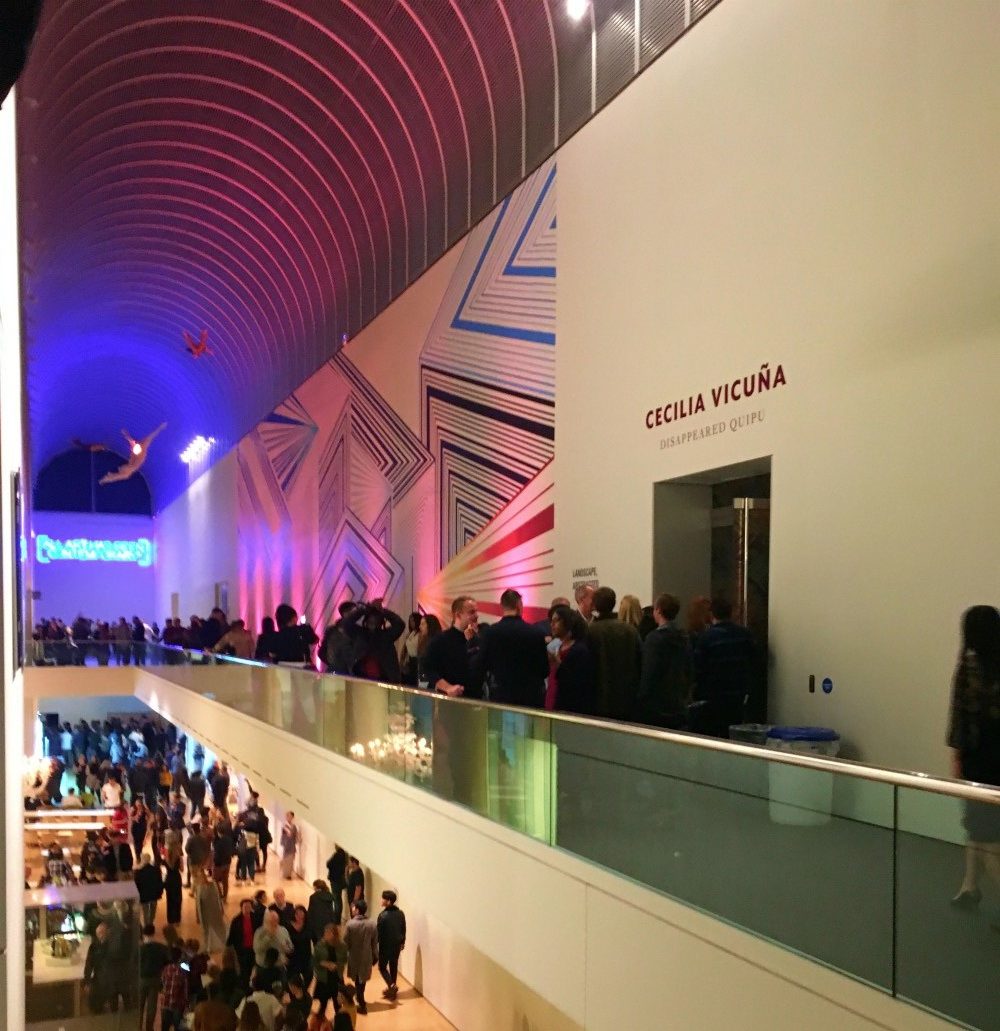
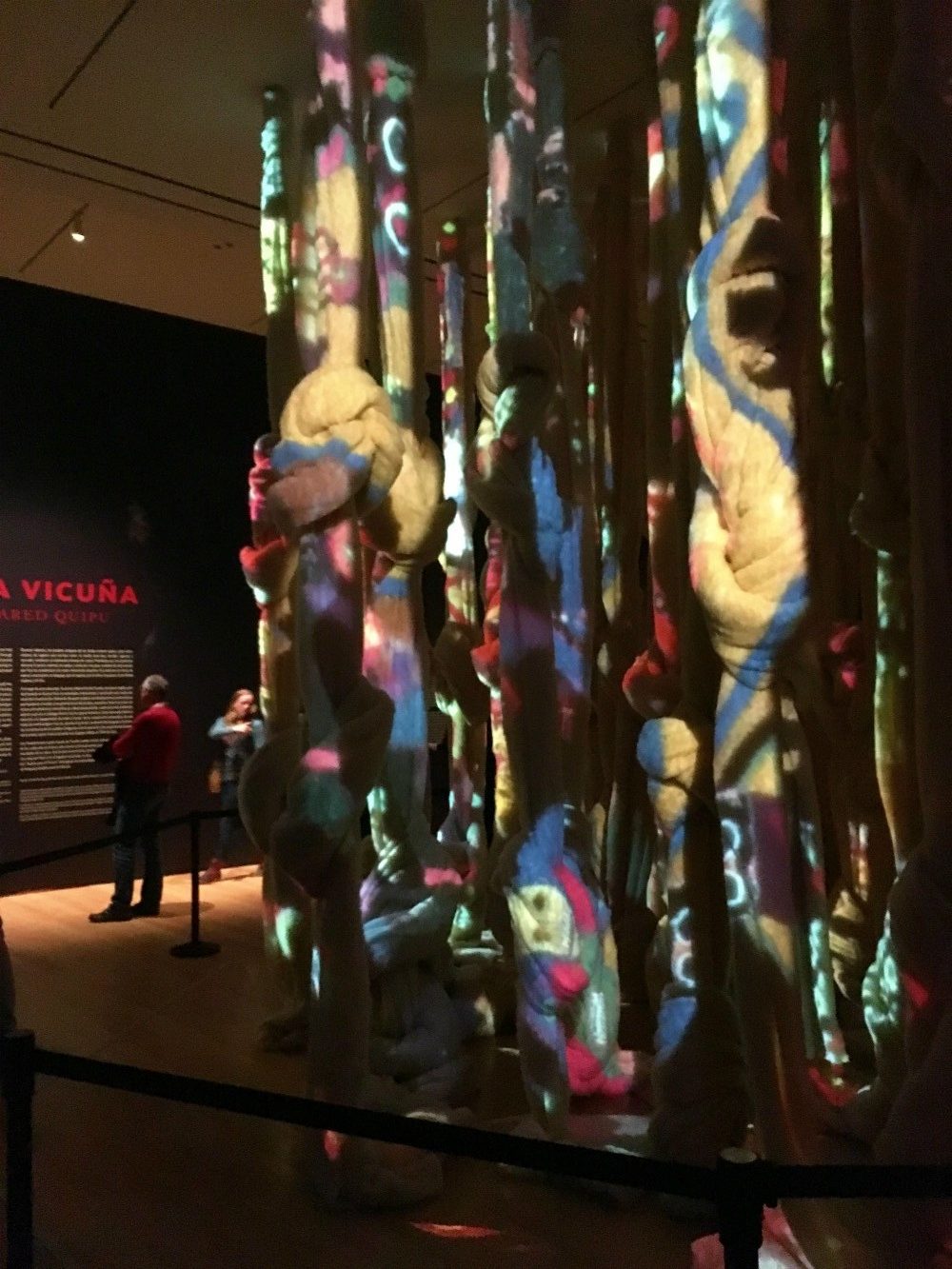


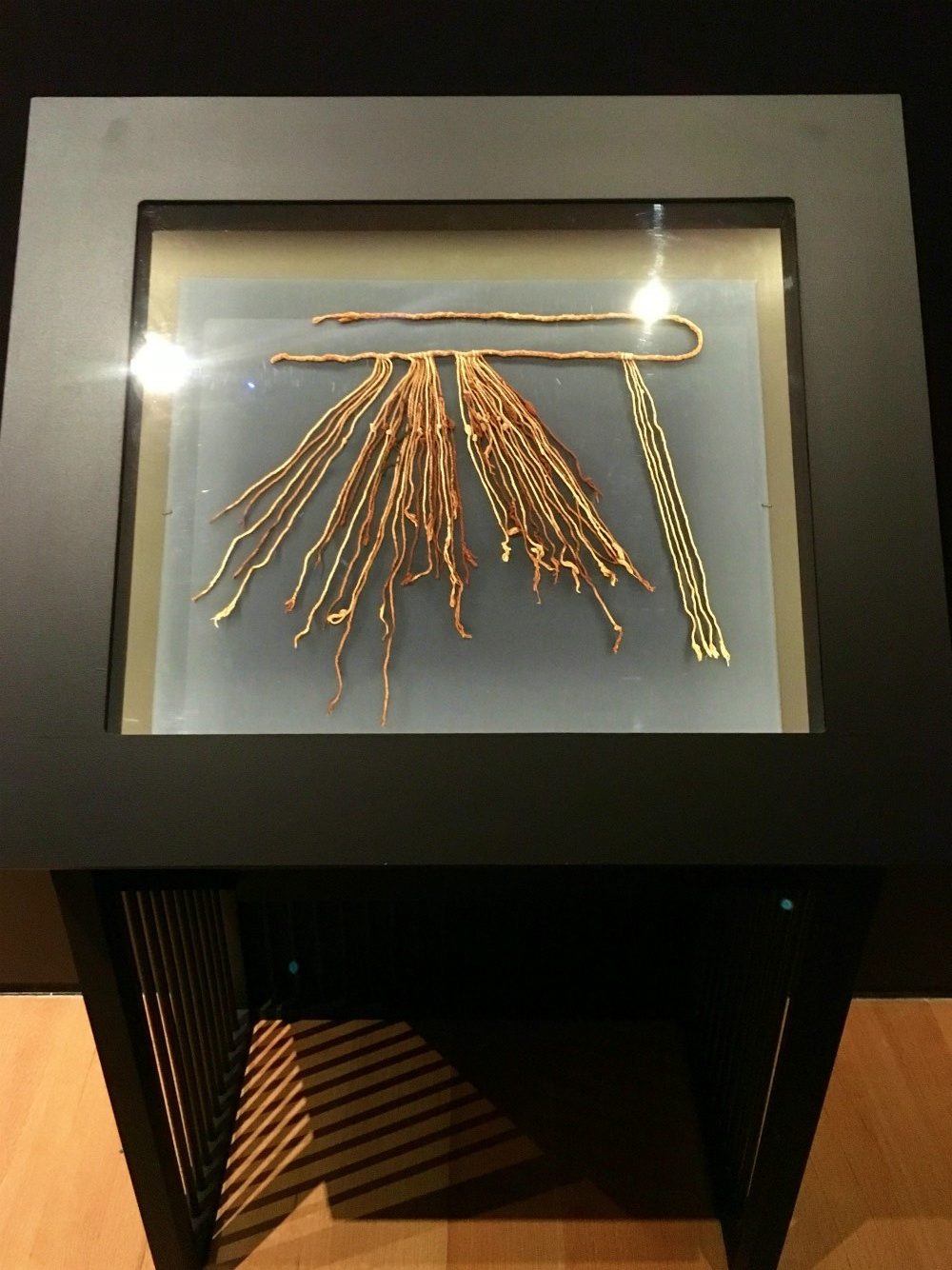
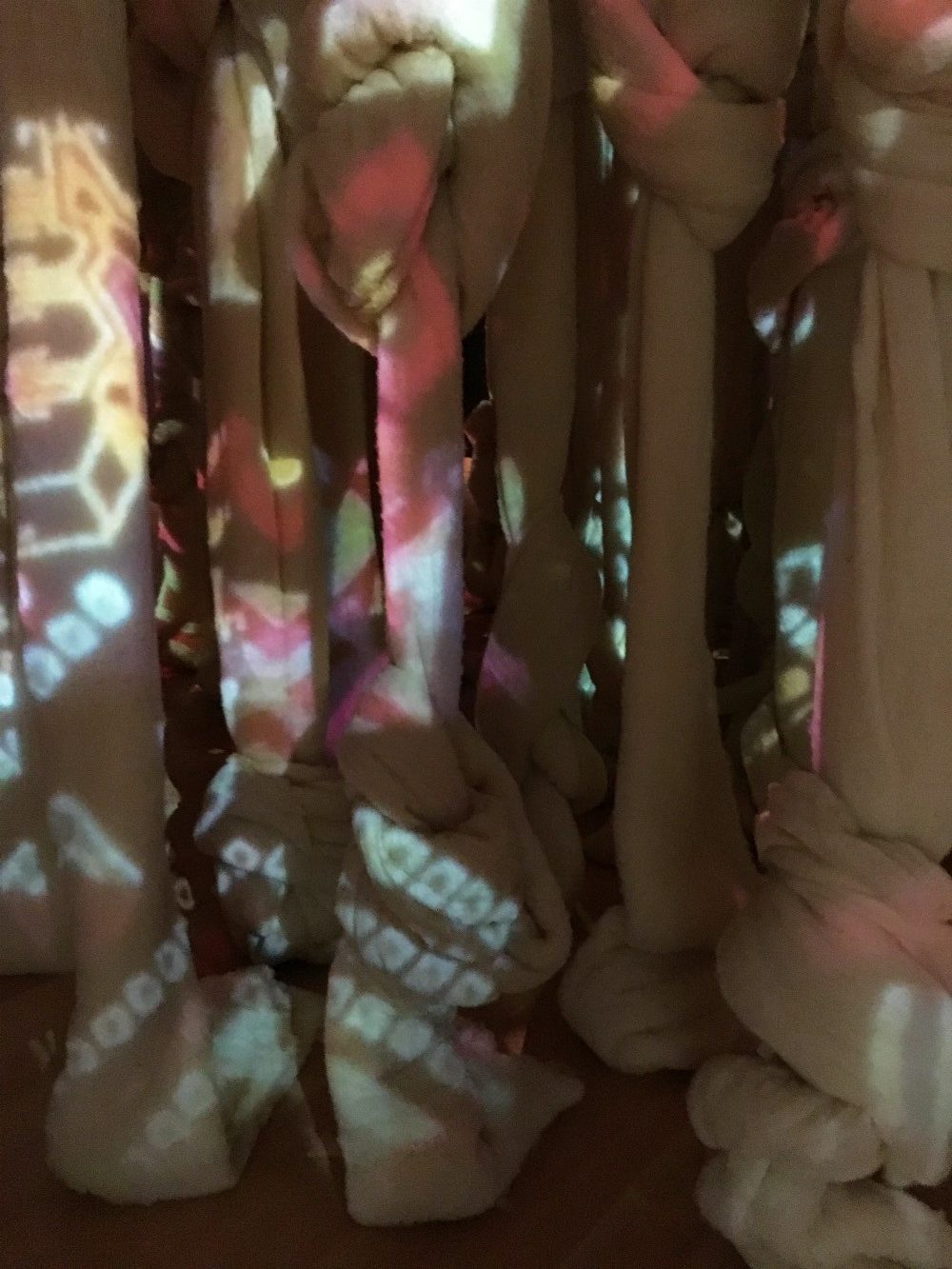

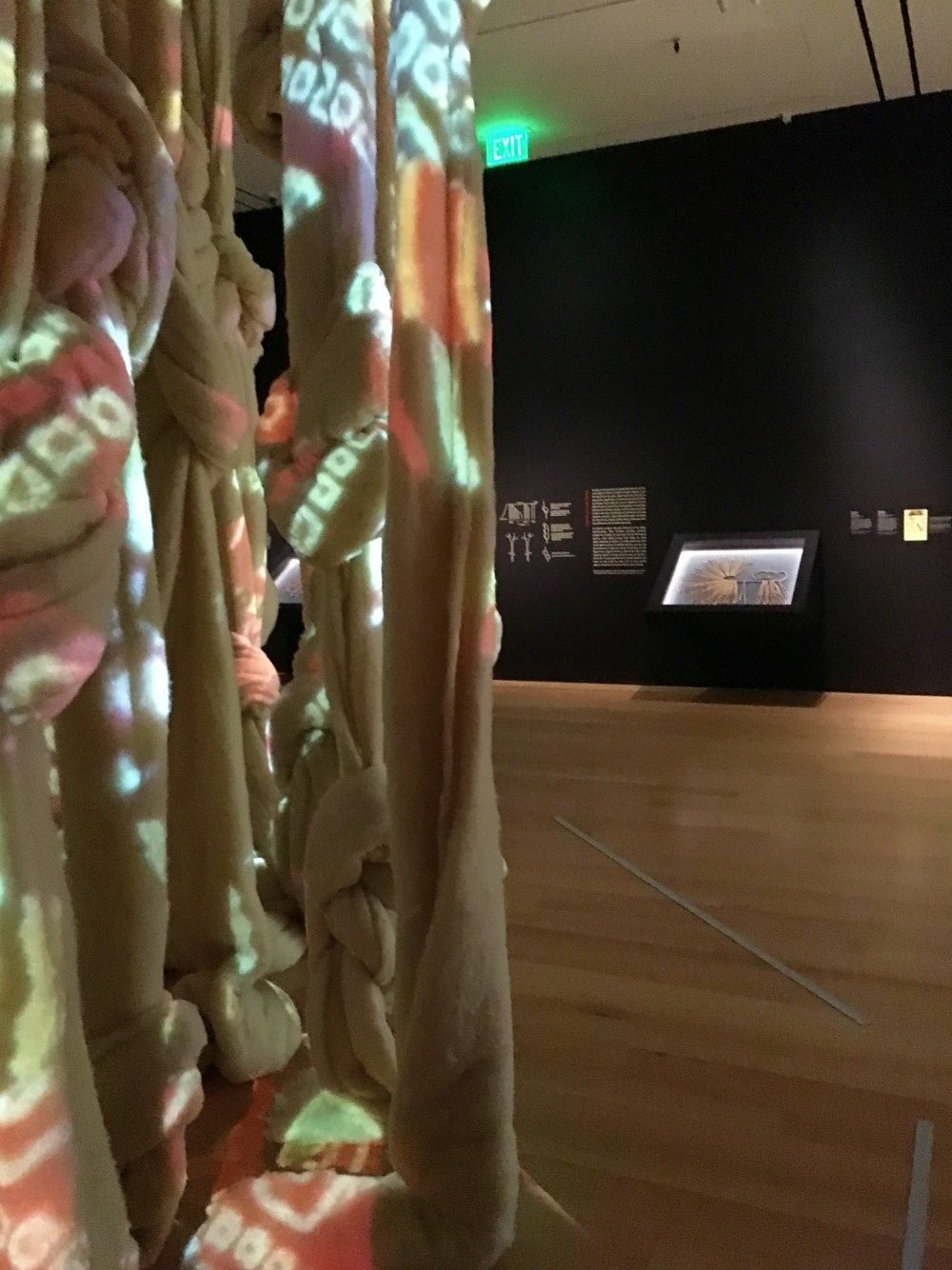
Fascinating. It makes eminent sense that they would have had to use a system to count things. I believe they had quite a mercantile aspect to their society
So glad that Vicuna was able to add to our knowledge like this and really glad you are doing such a great job of sharing it with us
It really is fascinating! Not at all surprising they had a complex system, and definitely glad the knowledge hasn’t been lost.